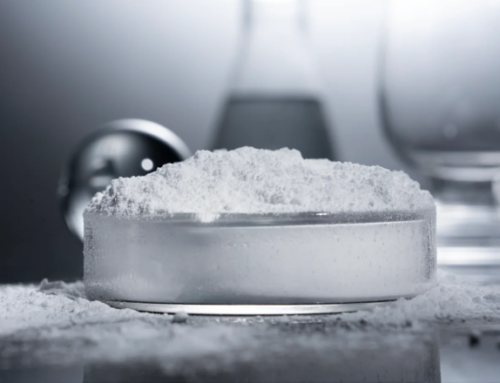1.Special warning
Easy to react with water, release toxic corrosive smoke.
2.Physical and chemical properties
Colorless or yellowish liquid with pungent sour taste. Extremely hygroscopic and smokes in the air (producing titanium dioxide and hydrogen chloride). Soluble in water, hydrochloric acid, hydrofluoric acid, ethanol, etc. Molecular weight 189.71, melting point -25℃, boiling point 136.4℃, relative density (water =1)1.73, critical temperature 358℃, saturated vapor pressure 1.33kPa(21.3℃).
Main applications: Mainly used in the manufacture of titanium salt, iridescent agent, artificial pearl, smoke screen, pigment, fabric mordant and so on.
3. Hazard information
【Combustion and Explosion risk】
Not flammable.
【Reactive reaction】
When exposed to heat or moisture, it releases toxic corrosive smoke and has strong corrosiveness.
【Health hazard】
Acute poisoning causes asthmatic bronchitis, chemical pneumonia, and may develop into pulmonary edema. Direct skin contact with the liquid can cause severe burns, and yellow pigmentation can be seen after healing.
4. Security measures
【General requirements】
Operators must be specially trained, strictly abide by operation rules, proficient in operation skills, and have emergency handling knowledge.
Closed operation, local exhaust in the workplace. Avoid creating smoke. Prevent the release of smoke and vapor into the workplace air. Equipped with two or more sets of heavy protective clothing. Operators should wear self-priming filter gas masks, wear rubber acid and alkali resistant suits, and wear rubber acid and alkali resistant gloves.
Containers and equipment such as storage tanks shall be equipped with liquid level gauges and thermometers, and shall be equipped with safety devices with liquid level and temperature remote recording and alarm functions.
Avoid contact with combustible materials, reducing agents, alkalis, active metals, water and water-containing substances. In particular, care should be taken to avoid contact with hydrous substances.
Safety warning signs shall be set up in production and storage areas. When handling, light loading and unloading should be done to prevent damage to packaging and containers. Equipped with leak emergency treatment equipment.
【Operation safety 】
(1) When opening the titanium tetrachloride container, ensure that the working area is well ventilated; Avoid releasing steam into the air of the work area.
(2) The following matters should be noted during the production and use of titanium tetrachloride:
——Must wear labor protection articles;
——When the system leaks, stand at the upper air outlet and wear a gas mask for operation.
(3) The cleaning sewage of the production equipment and the flushing water of the floor inside the production workshop must be collected into the emergency pool, and can be discharged after being treated and qualified.
(4) Universal joint filling pipe system is used when filling.
【 Storage security 】
(1) The storage site of titanium tetrachloride should be set up with obvious safety signs, the storage tank should be sealed with a metering device, and a certain space should be reserved for storage.
(2) Titanium tetrachloride should be stored in a dry and ventilated warehouse to prevent moisture, the relative humidity in the warehouse does not exceed 75%, if there is smoke in the warehouse should be ventilated first and then check the packaging container for leakage or damage or loose sealing phenomenon.
(3) It should be stored separately from combustible materials, reducing agents, alkalis, active metals, water and water-containing substances, edible chemicals, etc., and should not be mixed. The storage area is equipped with leak emergency treatment equipment and suitable containment materials. A cofferdam is set around the titanium tetrachloride storage tank, the volume of the cofferdam is equal to the volume of the storage tank, and the cofferdam and the ground are treated with anti-corrosion.
(4) Inspect each storage tank no less than twice a day, and make records, and timely contact and deal with hidden dangers such as running, bubbling, dripping and leaking, and timely report major hidden dangers.
【 Transportation Safety 】
(1) The transport vehicle should have a dangerous goods transport sign and a satellite positioning device with a driving record function. Without the approval of the public security organ, the transport vehicle shall not enter the area where the passage of the transport vehicle of hazardous chemicals is restricted.
(2) titanium tetrachloride is transported in a special tank truck, and the tank truck should be cleaned regularly; After filling and unloading, the feed port cover should be tightly closed to prevent the shaking of the moving vehicle resulting in the splashing of titanium tetrachloride; When unloading, ensure that the connection between the pipe and the valve is firm, and gradually open the valve slowly. When transported in other packaging containers, the containers shall be sealed with a cover of corrosion-resistant material. Titanium tetrachloride handling personnel should stand in the upper wind, handling personnel must pay attention to protection, according to the provisions of the necessary protective equipment; When handling, the management personnel must go to the site to supervise the unloading and loading; It is not suitable for handling at night or in low light and rainy days.
(3) It is strictly prohibited to mix with combustible materials, reducing agents, alkalis, active metals, water and water-containing substances, edible chemicals, etc. Transportation vehicles should be equipped with leakage emergency treatment equipment during transportation. During transportation, it should be protected from sunlight, rain and high temperature.
5. Principles of emergency response
【 First Aid measures 】
Inhalation: Quickly remove from the scene to fresh air. Keep your airway clear. If breathing is difficult, give oxygen. If breathing stops, give artificial respiration immediately. Seek medical attention.
Ingestion: Gargle with water, drink milk or egg white. Seek medical attention.
Skin contact: immediately remove contaminated clothing, immediately use clean cotton or cloth to absorb the liquid. Rinse with plenty of running water. Seek medical attention.
Eye contact: Immediately lift eyelids and rinse thoroughly with plenty of running water or saline for at least 15 minutes. Seek medical attention.
【 Fire extinguishing method 】
Firefighters must wear full body acid and alkali resistant firefighting clothing.
Extinguishing agent: dry sand. Water, foam, acid and alkali extinguishing agents are prohibited.
【 Leak emergency treatment 】
Delimit the warning zone according to the affected area of liquid flow and vapor diffusion, and evacuate irrelevant personnel from crosswind and upwind to the safety zone. Emergency personnel are advised to wear positive pressure self-contained air breathing apparatus and acid-alkali protective clothing. Do not touch cracked containers and spills before wearing appropriate protective clothing. Cut off the source of leakage as much as possible. Do not contact the leakage with combustible materials (such as wood, paper, oil, etc.). Prevent spills from entering water bodies, sewers, basements or enclosed Spaces. Small amount of leakage: Cover the leak with dry sand or other non-combustible materials, collect the leak with clean non-spark tools, and place it in a loose plastic container for disposal. Large leakage: build a embankment or dig a pit to contain it. Use lime powder to absorb large amounts of liquid. Transfer to tank truck or special collector with corrosion resistant pump.
Leakage on land: small amount of leakage, initial isolation 30m, downwind evacuation 100m during the day, 200m at night; Large leakage, initial isolation 60m, downwind evacuation 500m during the day, 800m at night. Leakage in water: a small amount of leakage, the initial isolation 30m, downwind evacuation 100m in the day, 200m at night; Large leakage, initial isolation 60m, downwind evacuation 600m during the day, 1900m at night.


Article from M&J International Trading Co., Ltd





